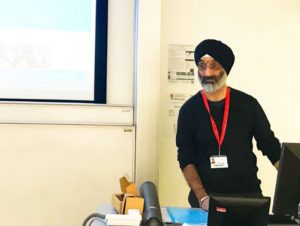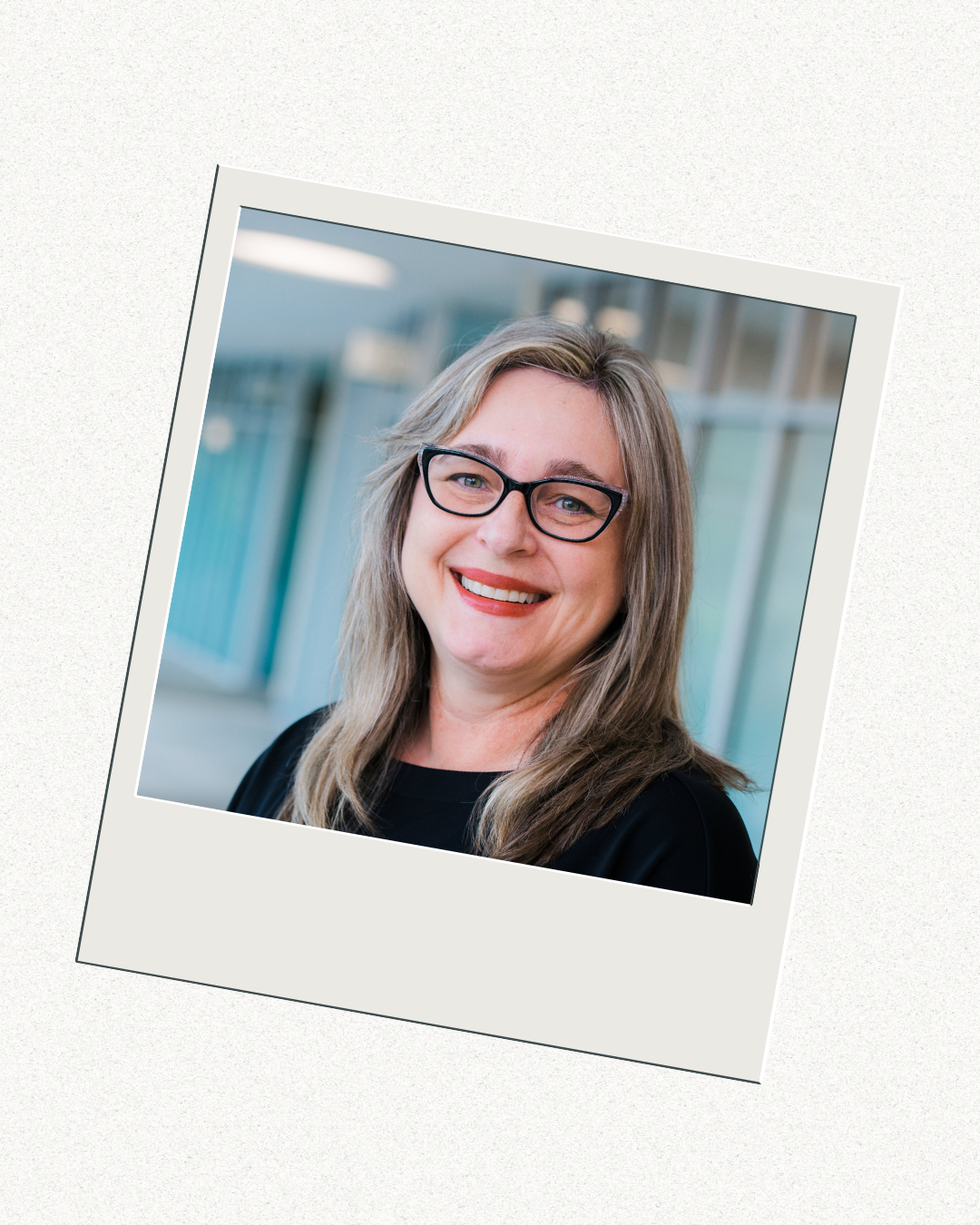360-degree immersive video apps: Why you should create meaningful research-based digital resources to engage learners

Editor’s Note: Dr. Tarsem Singh Cooner is a Senior Lecturer in the Department of Social Work and Social Care at the University of Birmingham. In this post, he describes why and how he developed 360-degree immersive video apps to create engaging learning opportunities for students. Additionally, his work shows how digital tools can be used to creatively disseminate research findings to practitioners. Dr. Cooner tweets at @Akali65. You can also email him at t.s.cooner@bham.ac.uk.
The background
Quite recently I was lucky enough to be part of a fantastic research project exploring factors that can either enable or create barriers to effective child protection social work. Our project had collected a lot of data that we were convinced could have a really positive impact on child protection services. To disseminate our research in a more accessible, meaningful, situated and impactful way, I led an initiative within the team to create a set of 360-degree immersive video apps that social work students and practitioners can download onto their smartphones via the iTunes and Google Play Stores. Using their phones with easily accessible 360-degree headsets (like Google’s Cardboard) they can become ‘immersed’ in our work through recreated scenes from our research experiences.
Preparing social work students for the licensure exam: An online intervention

Editor’s Note: Stephen Cummings is a Clinical Assistant Professor in the School of Social Work at the University of Iowa, where he works primarily distance education. In this blog post, Stephen shares how he converted an onground licensure prep review course into an online course with live sessions to increase accessibility of the content for students. You’ll also find a link to his published work about the course in the post. You can find Stephen on Twitter at @spcummings.
Over the past several years, I have been providing an online study session to help MSW students prepare for the Masters-level licensing exam. The online intervention came out of a practical necessity.
A brief history: In the spring of 2013, several students approached my school’s faculty with a concern. Iowa, our jurisdiction, allows students to sit for the graduate level licensure exam during their final semester. As long as a student is in good standing (meaning they are not on academic probation and are taking the requisite course work for graduation), that student can be granted permission to sit for the exam prior to graduation day. This arrangement is intended to help close the gap between graduation and full employment, specifically in an environment where licensure is required. The students asked if the school could provide assistance is exam preparation.
Sharing power with students by seeking their input on a grading rubric


Editor’s Note: Matthea Marquart is the Director of Administration for the Online Campus at the Columbia School of Social Work and Elise Verdooner is an Associate with the Columbia School of Social Work. In this blog post, Matthea & Elise share how they sought input from social work students in one of their courses to revise and update an assignment rubric. This practice offers social work educators at all levels the opportunity to bring equity to the classroom.
Introduction: Why did we decide to try sharing power with students around the rubric for our final assignment?
This spring, we worked together to teach a course on Staff Development, Training, and Coaching at Columbia University’s School of Social Work (CSSW). This is an elective course for second-year students in their final semester of our MSW program. Matthea was the instructor and Elise was the Associate (similar to a TA, an Associate at CSSW provides academic support to graduate social work students).
As we were planning the course, Matthea attended a workshop on “Grading, Rubrics, and Feedback for Equity and Inclusion,” which was hosted by Monique M. Jethwani, Director of Faculty Development at CSSW, and led by Amanda M. Jungels and Chandani Patel of Columbia’s Center for Teaching and Learning (CTL). Matthea’s key takeaway from the workshop was to try an activity to increase inclusiveness around grading by giving students the power to amend the rubric for the final assignment, and Elise was willing to give it a try as well. The activity appealed to us because as social workers we believe in creating an inclusive classroom.
Consciously Connecting and Proactively Collaborating: The CoActEd Learner Mapping Tool in #SocWorkEd

Editor’s Note: Amanda Taylor-Beswick is a Senior Lecturer in the School of Social Work, Care and Community at the University of Central Lancashire. She is also an author of the book, The LearningWheel Book, whichprovides educators with a model for helping students and practitioners develop digital literacy skills. In this blog post, Amanda describes one of the tools from her book, the CoActEd Learner Mapping Tool. She tweets at @AMLTaylor66.
From the moment a social work student steps into the educational environment, they are engaged in a socialising process that involves exposure to, familiarisation with, and the development of professional norms. Through this carefully crafted learning experience a student’s Professional Learning Network (PLN), amongst other things, begins to form; professional relationships with academics, with practice partners, with practitioners and with student peers are built. This professional network is primarily local, largely institutional and generally geographically bound. However, digitisation means that the professional network no longer needs to be so rigid, so limited or so confined. The availability and affordances of social technologies (those that are #GDPR compliant) offer opportunities for social work students to connect outside of their direct or more natural community of learning. They can engage with the global social work community which, in previous times, may have been out of reach. The use of a medium through which to map and to therefore build connections forms the basis of this blog.
‘App’- lying the digital in social work… Or why we should not be teaching the same way for 20 years

Editor’s Note: Denise Turner, PhD is a senior lecturer in the Department of Social Work at London Metropolitan University. Her research interests focus on the innovative use of digital technology in teaching and practice. In this blog post, Denise shares her collaborations and process when developing an app for mobile devices for social work students and practitioners. You can follow Denise on Twitter at @DeniseT01.
The Background
Recently, my first draft of an article focussed on creating digital resources to update social work education, was returned with the question, ‘Does it really matter that this has been taught the same way for over twenty years?’ After the inevitable, slightly nonplussed reaction to article reviews, I was forced to give this question some considerable thought. Certainly, Steve Wheeler, whose work on e-learning I hugely admire, counsels against using technology simple because it is ‘new and shiny’ (Wheeler, 205, p. 7). In response to the reviewer, I had to ask myself if this applied to me. Was this what I was doing? Simply jumping on a digital bandwagon because it was trendy? Certainly, my ever-advancing years and my own lack of digital acuity suggested this might be the case. As the old adage suggests, was I one of those who taught because I couldn’t do? On reflection, I returned to the original source of the problem in order to try and find an answer.
Using Rubrics to provide Strength-based Feedback for Social Work Assignments

Editor’s Note: I am excited to welcome back Kristen Samuels, MSW, MS, MEd, the Field Director for University of Phoenix’s Department of Social Work, for this month’s guest educator blog post. Back in December 2018, I sent a tweet asking for advice on how to improve my grading practices, and turned the responses from colleagues into a blog post. Kristen was one of those colleagues and I asked her to turn her own tweets about strength-based feedback and rubrics into this blog post. Kristen can be reached at Kristen.samuels@gmail.com, or @KristenMSamuels on Twitter.
I recently returned to the classroom as a student in an EdD program. Although I certainly struggle with the workload, committing to life-long learning and taking the role of the student has made me a better instructor. As I am reminded of the anxiety that comes with unclear expectations or inconsistent grading practices, I become more aware of my own approaches for delivering feedback in my online classrooms. In discussions with my peers about the rigor and intensity of the doctoral writing process, we reflected on our individual fears in presenting written assignments to any of our former professors. Writing is an incredibly complex and emotive process. Students are asked to read, comprehend, apply, analyze, summarize, etc., and then present content in an integrated, accurate, and convincing way. It would be easy to miss a step and lose confidence in our position, and in that way, students are vulnerable when turning in written assignments. After putting forward long thought-out interpretations and opinions of the material, it is difficult to not view feedback as a personal attack on our intelligence. We wind ourselves up in self-doubt, and add undue stress when we throw in the impossible task of deciphering tone from an instructor’s feedback.
Strength-based feedback for Social Work Assignments
For this reason, and particularly for us as Social Work educators, we owe it to our students to present feedback with care. This can be as simple as avoiding capitalizing words (the online equivalent of shouting), and intentionally leading/ending feedback with what the student has done well in the assignment. Research on feedback tells us that affirmative comments acknowledges students’ efforts and encourages learning, instead of emphasizing grades (Stipek & Chiatovich, 2017). It is also an excellent way to model strengths-based approaches with our students!


